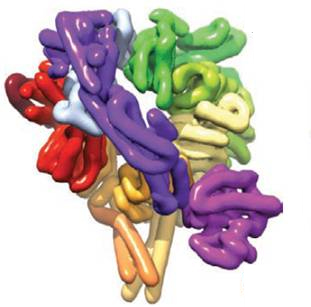Unique motor-protein walk discovery may be clue to neural disorders
January 17, 2012
Harvard Medical School scientists have discovered a unique “drunken sailor” gait of dynein. Dynein is a protein that is critical for the function of every cell in the body and whose malfunction has been associated with neurodegenerative disorders such as Lou Gehrig’s disease and Parkinson’s disease.
Found in all of our cells, dynein is one of three types of “motor proteins” (dynein, myosin, and kinesin). These are molecular machines that are constantly working to shuttle materials (along their microtubule track) that are needed to keep cells alive, allow cells to move and divide, and talk to their neighbors. As in all three types of motor protein dynein is “two-footed,” using the energy from breaking chemical bonds to generate movement of cargo
“The myosin and kinesin motors work by walking more or less like we do: one foot in front of the other in a straight line,” says Samara Reck-Peterson of Harvard Medical School. “We have discovered that the third motor model, dynein, appears to be different. Its two feet are at times uncoordinated and often veer from side to side (think drunken sailor).
“This mode of walking makes the dynein motor unique and may allow it to navigate obstacles while performing its transport functions in cells. Interestingly, our data also suggest that the dynein motor becomes more coordinated when it is hauling something large, implying that the motor can become more efficient when necessary.”
Deciphering the walking mechanism of dynein may one day shed light on the molecular basis of neurodegenerative disease, says Reck-Peterson.
Ref.: Qiu W., et al., Dynein achieves processive motion using both stochastic and coordinated stepping, Nature Structural & Molecular Biology, 2012; [DOI:10.1038/nsmb.2205]
